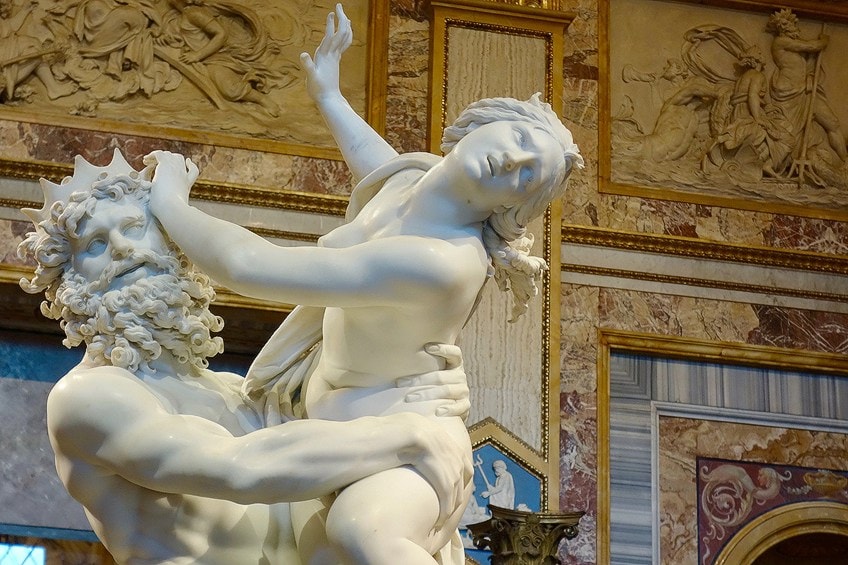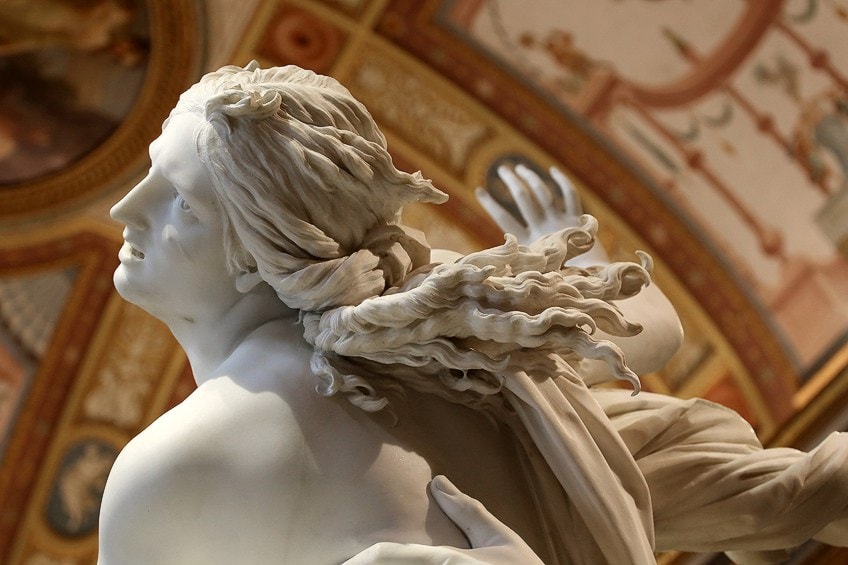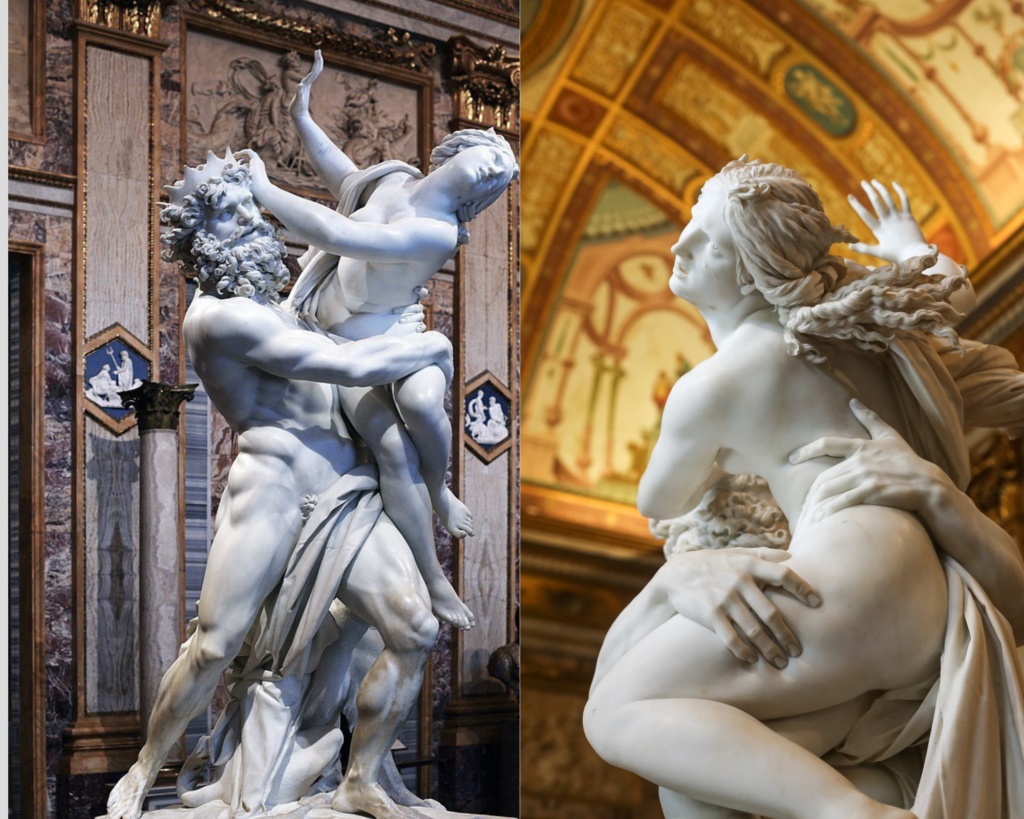“The Rape of Proserpina” is a masterpiece by the great Italian sculptor Gian Lorenzo Bernini, displayed inside the Borghese Gallery in Rome. This Baroque marble sculpture, created between 1621 and 1622, was completed when Bernini was only 23 years old. It depicts the Roman mythological tale of the abduction and subsequent rape of Proserpina by the god Pluto.
The Historical Legend of Pluto and Proserpina
This sculpture captures a scene from the myth of Pluto and Proserpina (also known as Proserpine), a story recounted in both the “Metamorphoses” by the 1st-century Roman poet Ovid and “De raptu Proserpinae,” written 400 years later by the Latin author Claudian.

Proserpina, the daughter of Jupiter and Ceres, the Roman goddess of agriculture, is picking flowers in a meadow when she is suddenly abducted by Pluto, the god of the underworld. Pluto bursts forth from the ground in a chariot drawn by four black horses, seizing Proserpina and dragging her down to the underworld. Her desperate screams reach Ceres, who, in her grief and rage, causes the earth to dry up and harvests to fail. This devastation forces Jupiter to intervene, resulting in a compromise: Proserpina would spend half the year with Pluto in the underworld and the other half with Ceres on earth. This myth beautifully illustrates the changing of the seasons: when Proserpina is in the underworld with Pluto, nature withers and winter ensues; when she returns to her mother, the earth blooms anew, heralding the arrival of spring.
Italy’s Masterpiece: Bernini’s “The Rape of Proserpina”

Bernini’s statue captures the dramatic climax of the myth, depicting the exact moment when Pluto seizes Proserpina. She struggles desperately against his powerful grip as he carries her across the threshold into the underworld, which is symbolized by the presence of a marble Cerberus, the three-headed guardian of the underworld. Both figures are nearly nude, with only a drape of cloth modestly covering Pluto’s thigh and Proserpina’s shoulder. This cloth ingeniously connects the marble Cerberus to Pluto, emphasizing the boundary between the earthly realm and the underworld. The intensity of their struggle is rendered with exquisite detail, showcasing Bernini’s masterful ability to convey emotion and movement in stone.

Standing at an impressive height of nearly 7.5 feet, Bernini’s sculpture is masterfully carved from Carrara marble, a prized material sourced from Tuscany and cherished by ancient Roman builders for its quality and beauty. The sculpture’s intricate and lifelike details elevate the narrative, imbuing it with a profound emotional depth that strikes a chord with viewers. Bernini’s exceptional craftsmanship not only enhances the storytelling but also creates a tangible, almost palpable connection to the myth of Pluto and Proserpina. This connection allows the audience to experience the intensity and drama of the moment as if they were witnessing the myth unfold in real-time. The expressive details, from the tension in Proserpina’s muscles to the determination in Pluto’s grip, bring the legendary tale to life, making the marble seem to pulse with emotion and energy. This vivid portrayal ensures that the myth is not just seen, but felt deeply by those who behold this remarkable piece of art.

